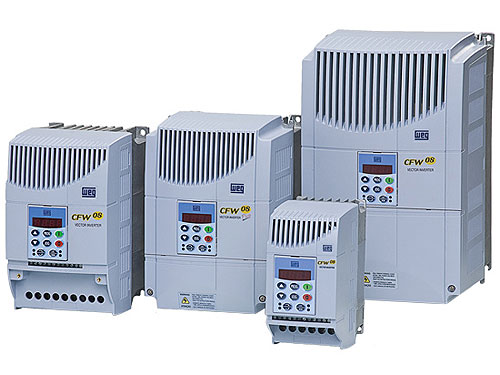What is a VFD? Variable-frequency drives, or VFDs, are a means of controlling the speed of an ac motor, typically an ac induction motor. It does so by varying the frequency of the power source.
VFDs operate by switching their output devices, which can be transistors, IGBTs, or thyristors, on and off. VFDs can be either constant voltage or constant current. Constant voltage types are the most common type of VFD. It uses pulse width modulation (or PWM) to control both the frequency and the voltage applied to the load.
Why use VFDs? They are a powerful way to control the speed of ac induction motors and are fairly simple and easy to use. Among the benefits of using a VFD for motor speed control is the actual energy savings. Controlling the amount of current drawn by the motor can save a lot on energy costs because the motor will not run at full current all of the time.
Especially since Congress passed the Energy Independence and Security Act of 2007 (EISA), motor efficiency has become a top priority. For instance, single-phase induction machines (specifically, permanent split-capacitor motors) and universal motors, widely used in industrial washers, are managed with simple voltage-control techniques. Contrast this with high-end, high-performance machines where three-phase motors are more common and which use VFDs.
Switch reluctance motors (SRMs) are not yet an appropriate alternative because their control schemes are still evolving, but three-phase motors are readily available and may be a smart choice because their VFD control techniques have improved significantly. More important, VFD electronics costs have been dropping as well, making them more cost-effective.
In the same way, an OEM using a universal motor with simple triac control may now find that a three-phase VFD control will provide better energy efficiency, while OEMs using three-phase/VFD configurations may make the move to technologies like brushless dc motors.
Another advantage of VFDs is seen on motor start-up. Without a VFD, an induction motor on start-up has to handle a high initial in-rush current. As the motor speeds up and approaches a constant speed, the current levels off from the peak in-rush values. So with a VFD, the motor’s input starts off with low voltage and a low frequency, avoiding the problem of high in-rush currents.
Of course, the main reason any kind of speed control is used on motors is to gain greater and more precise control over motor speed and therefore adjust the motor speed to meet the requirements of the load and also to reduce energy costs.
Another benefit of using a VFD for motor speed control is the reduction of mechanical wear on the motor components. Eliminating the in-rush currents upon start-up gets rid of the excessive torque on the components, and thus increases the life of the motor and reduces maintenance costs and the need for repair.
There are some drawbacks to using VFDs, however. The main one is the possibility of harmonic distortion which can effect the power quality as well as the operation of other machinery. However, VFD manufacturers have been developing solutions that mostly eliminate this problem.



Leave a Reply
You must be logged in to post a comment.